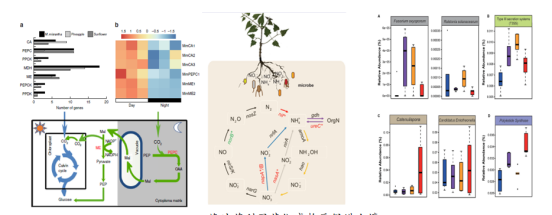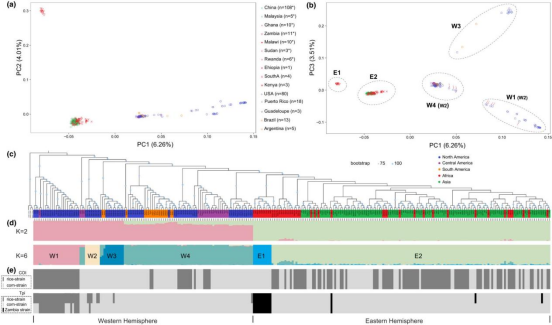The diffusion mechanism of invasive species
1. The secret of rapid growth of Mikania micrantha
Mikania micrantha is one of the top 100 worst invasive species that can cause serious damage to natural ecosystems and substantial economic losses. Fanghao wang’s lab has show that M. micrantha achieves higher photosynthetic capacity by CO2 absorption at night to supplement the carbon fixation during the day, as well as enhanced stem photosynthesis efficiency. Furthermore, the metabolites of M. micrantha can increase the availability of nitrogen by enriching the microbes that participate in nitrogen cycling pathways. And,the enrichment of microbes involved in nutrient acquisition and pathogen suppression in the rhizosphere of M. micrantha largely enhances its adaptation and invasion to various environments,These findings collectively provide insights into the rapid growth and invasive adaptation.

2. Genetic origin of Spodoptera frugiperda
A major plant pest fall armyworm (FAW), Spodoptera frugiperda , is native to the Americas and has colonized Africa and Asia within the Eastern hemisphere since 2016, causing severe damage to multiple agricultural crop species. Yutao Xiao’s Lab analysed genetic variation across the genomes of 280 FAW individuals from both the Eastern hemisphere and the Americas. The global range-wide genetic structure of FAW shows that the FAW in America has experienced deep differentiation, largely consistent with the Z-chromosomal Tpi haplotypes commonly used to differentiate ‘corn-strain’ and ‘rice-strain’ populations. The invasive populations from Africa and Asia are different from the American ones and have a relatively homogeneous population structure, consistent with the common origin and recent spreading from Africa to Asia. Our analyses suggest that north- and central American ‘corn-strain’ FAW are the most likely sources of the invasion into the Eastern hemisphere. Furthermore, evidence based on genomic, transcriptomic and mitochondrial haplotype network analyses indicates an earlier, independent introduction of FAW into Africa, with subsequent migration into the recent invasive population.


